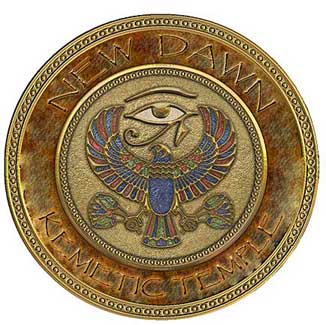|
|
|


~Craig Hildreth~
The temple of Dakka, dedicated to Thoth of the Sycamore Fig, was originally located about 100 kilometers south of the Aswan High Dam in what we refer to today as Nubia, though much of that ancient land is covered by Lake Nasser. El-Dakka was known to the Egyptians as Pselqet and to the Greeks as Pselchis. Because of the impending flooding of the region as a result of the High Dam, it was moved to the site of el-Sebua, about 40 kilometers upstream, between 1962 and 1968.
The temple we see today was actually begun by the Meroitic (Nubian) king, Akamani, who the Greeks called Ergamenes, in about 220 BC, though this date is somewhat disputed, with some scholars maintaining that it dates as earlier as Ptolemy II Philadelphus 282-246. However, it is Dakka Temple full viewmore likely that, while Akamani may have been alive early in the reign of Ptolomy II Philadelphus, it is more likely that the temple dates to the reign of Ptolomy IV Philopator (222-205). Irregardless, together with his son named Arka (probably Argamani, Greek Ergamenes II), it's construction appears to have become a combined effort between these Nubian kings and the line of Greek Pharaohs in Egypt, probably commencing with Ptolomy IV, though its construction continued through the reigns of Ptolemy VIII Euergetes II and into the Roman rule of Augustus and Tiberius.
Today, Dakka sits dramatically on a small bluff. This is the only Nubian temple with a facade that faces to the north and oriented north-south to parallel the course of the Nile. The pylon of the temple is now separated from the remainder of the temple due to the missing enclosure walls of the open court. Above the entrance in the pylon, a solar disk with a uraeus extends its wings. On the southern side of the temple, a small entrance leads into the interior of the pylon and to a stairway that communicates with several internal rooms.
Plan of the temple of Dakka (Thoth)After the open courtyard, the facade of the pronaos is adorned with reliefs of a Ptoemaic King sacrificing to various deities. The portal of this section of the temple is engaged to two columns that support an architrave. Beyond the pronaos, the temple has two sanctuaries, which include that built by Arkamani and then a second one added by Augustus. By far the Nubian reliefs within the temple are the most interesting. They are small and precise in detail, depicting the Nubian king making offerings to local gods of Aswan. Some of these best of these reliefs portray Anqet, the goddess of Aswan with her elaborate feathered headdress, and the lion-headed goddess Sekhmet. Other scenes depict the king making offerings to not only Thoth, but also Isis and Tefnut.
When the temple was moved, it was discovered to contain a number of reused blocks from an earlier structure dedicated to Horus of Baki (Quban) that was built by Hatshepsut and Tuthmosisi III, though this earlier New Kingdom temple may have been constructed on the opposing shore of the Nile. However, unlike many New Kingdom temples built in Nubia that seem to have been constructed more as symbols of power, but isolated and having perhaps no real public worship The small Temple of Maharraka very near the Temple of Thoth (Dakka) at the el-Sebua sitefunctions and limited priesthood, this temple was apparently built in an urban center were an active cult was more likely.
It should also be noted that at the modern site of the el-Dakka temple, not only do we find the temple of el-Sebua, but also the small Maharraka temple, dating from Roman times and dedicated to Serapis and Isis. Interestingly, this small temple contains the only spiral staircase in any Nubian temple. However, this temple's decorative theme was never competed. It to was moved to this location from its original site about 81 kilometers to the north.